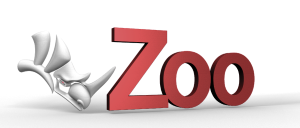



#Lands design rhino 6 Patch#
To get a Patch surface that fills the square, I needed to add two points (at the appropriate spot elevation) to the locations indicated. In my case, I wanted a surface that would fill a square boundary, but the patch bases the surface extent on your points and adds some for good measure. you can experiment with this but a number around 100 should do the trick. A higher number here will make the surface less bendable and in our case here less accurate. Higher numbers will give you more accuracy but if these numbers are too high (on my computer over 80) your computer will crash. For patch you will be given some options. Now select all of these points and use the command “Patch” (you can type this in or use the icon). Your model will look like the one on the right. Then you use the command in Rhino “Extract Points” Which will give you (depending on your contour line accuracy) thousands of points. You might want to turn other layers off for this. The first thing to do is select all of the contour lines at once, being careful to select no geometry that is not elevation information. Step Tw o – Extract Points.Your contour lines should look something like the images at the left hand side. Once this is done you can move on to the next step. Many CAD files already have this done, in which case you are in luck! otherwise be prepared to spend some time moving all your lines to the appropriate height. But they do need to be at the correct vertical elevation or “Z” coordinate. The contour lines do not need to be joined as a single line. Don’t worry too much as long as you can find and isolate the contour lines. Step One – Prepare your Contour Lines. You can import most CAD drawing formats directly into Rhino although some information will be lost. This will allow you to quickly and easily develop a 3D model in Rhino. Often you will start a project with existing topographical information in the form of contour lines in a CAD program. You can join the development proces by sending your feedback to the Lands Design Community ( ) Watering system tools: define the watering installation using different sprinkler types, sprinkler distributions, and pipes.Civil Work: create paths, stairs, dwarf walls, fences, or element rows for your landscape project.Lands Design includes a set of tools to easily modify terrains, calculate the volume of land movements, apply cut and fills, hollows, etc. 3D Terrain modeling tools: create terrains from contours, elevation curves, point clouds or import terrains from Google Earth.The tree editor allows to easily customize the appearance and shape of any plant with textures and materials, from the trunk to the tiniest leaf. Customize and edit vegetation species: assign custom 2D and 3D representations to each plant species.They can have different render appearances for season change simulation. Realistic images, virtual tours: lands design includes libraries with real trees, each one with textured materials on leaves, branches, trunks and flowers.

Setting out plans and Landscape project documentation: automatically generate 2D technical plans of a landscape project and create lists to quantify the information of the plant species, zoning areas, watering systems, etc.Plant database with more than 1800 species: search and insert plant species, each one with their own technical specifications and detail characteristics.


 0 kommentar(er)
0 kommentar(er)
